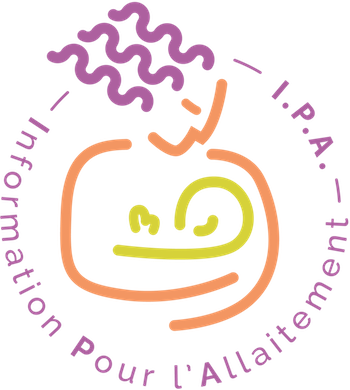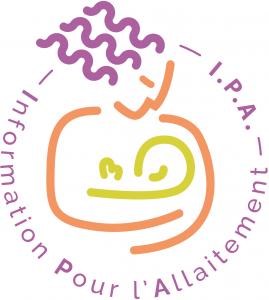Catégories
 > Physiologie > Physiologie nutrition > Composition du lait > Composition du lait maternel > Physiologie > Physiologie nutrition > Composition du lait > Composition du lait maternel
Composition du lait maternel |
Documents disponibles dans cette catégorie (192)
Ajouter le résultat dans votre panier Faire une suggestion Affiner la recherche
Article : texte imprimé
Jennifer T. Smilowitz, Auteur ; Deborah S. Gho, Auteur ; Majid Mirmiran, Auteur |Background: Although it is well established that human milk varies widely in macronutrient content, it remains common for human milk fortification for premature infants to be based on historic mean values. As a result, those caring for prematur[...]Article : texte imprimé
Shelley Thibeau, Auteur ; Karen D'Apolito, Auteur ; Ann F. Minnick, Auteur |Background: In the United States, African American infants experience the highest mortality, and their mothers report the lowest breastfeeding rates. Science reports decreased infant mortality among breastfed infants and suggests that milk immun[...]Article : texte imprimé
Jumpei Saito, Auteur ; Kayoko Kaneko, Auteur ; Naho Yakuwa, Auteur ; Hiroyo Kawasaki, Auteur ; Akimasa Yamatani, Auteur ; Atsuko Murashima, Auteur |Background: Oral direct factor Xa inhibitors, collectively referred to as direct oral anticoagulants, are not recommended for breastfeeding women due to insufficient data about the transfer of these drugs into breast milk. In this study, we seri[...]Article : texte imprimé
Marcella Muysson, Auteur ; Kendall Marshall, Auteur ; Palika Datta, Auteur ; Kathleen Rewers-Felkins, Auteur |Background: Rivaroxaban (Xarelto) is a reversible direct factor Xa inhibitor used for the treatment and prevention of coagulation in numerous syndromes. There is very limited information available on the transfer of rivaroxaban into human breast[...]Article : texte imprimé
Man-Chin Hua, Auteur ; Chien-Chang Chen, Auteur ; Tsung-Chieh Yao, Auteur |Background: Although protection against infectious diseases has been observed among breastfed infants as compared to formula-fed infants, possible benefits of breastfeeding by allergic mothers for allergy prevention remain controversial. Obj[...]Article : texte imprimé
Jill K. Baird, Auteur ; Shawn M. Jensen, Auteur ; Walter J. Urba, Auteur |Background The Severe Acute Respiratory Syndrome Coronavirus 2 (SARS-CoV-2) pandemic has infected over 127 million people worldwide, with almost 2.8 million deaths at the time of writing. Since no lactating individuals were included in initial [...]Nouveauté
Article : texte imprimé
Ruth A. Lawrence, Auteur |This journal continues to report on the value of the constituents of human milk from the bench laboratories as well as the analysis of the physiology of lactation in the clinical laboratories, but the business case for breastfeeding is equally i[...]Article : texte imprimé
Article : texte imprimé
April D. Fogleman, Auteur ; Ting Meng, Auteur ; Jason Osborne, Auteur |Objective: The objective was to examine the bacteriological and immunological properties of freshly expressed, previously frozen, and leftover mothers' own milk during storage. Materials and Methods: In the first of two pilot studies, 12 moth[...]Article : texte imprimé
Ting Meng, Auteur ; Maryanne T. Perrin, Auteur ; Jonathan C. Allen, Auteur |Objective: To determine the impact of storage on bacterial growth and immunological activity of pasteurized human milk and leftover pasteurized human milk that has been exposed to the microflora in an infant's mouth. Materials and Methods: Ei[...]Article : texte imprimé
Virginia Martín, Auteur ; Pilar Mediano, Auteur ; Rosa del Campo, Auteur |Background: The genus Streptococcus is 1 of the dominant bacterial groups in human milk, but the taxonomic identification of some species remains difficult. Objective: The objective of this study was to investigate the discriminatory abilit[...]Article : texte imprimé
The use of personal care products poses some potential risks to the breastfed infant because they can enter the breast milk. Summer tends to be a time when more of these products are used on the skin because of exposure to insects and sun. The e[...]Article : texte imprimé
Michiko Yoshida, Auteur ; Hitomi Shinohara, Auteur ; Toshihiro Sugiyama, Auteur |Background: The refusal of infants to suckle from a breast that is inflamed with mastitis suggests that the taste of the milk has changed. However, the taste of milk from a breast with mastitis has never been empirically determined. The present [...]















